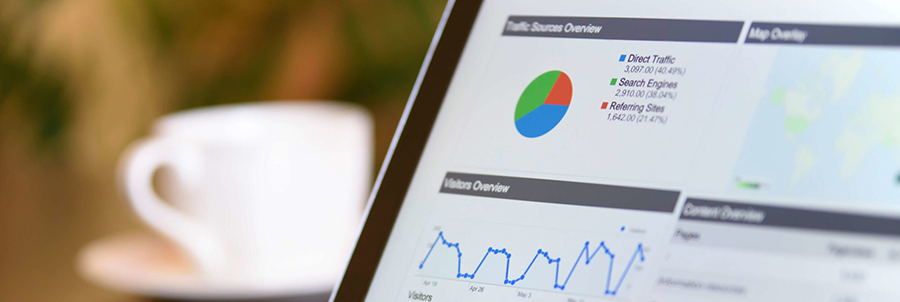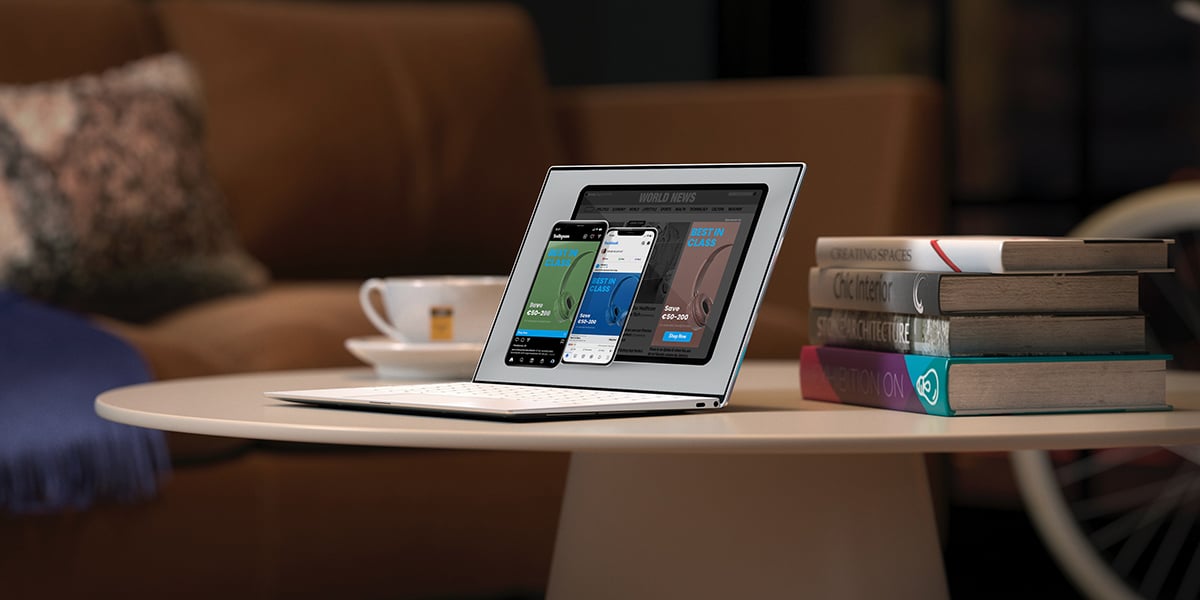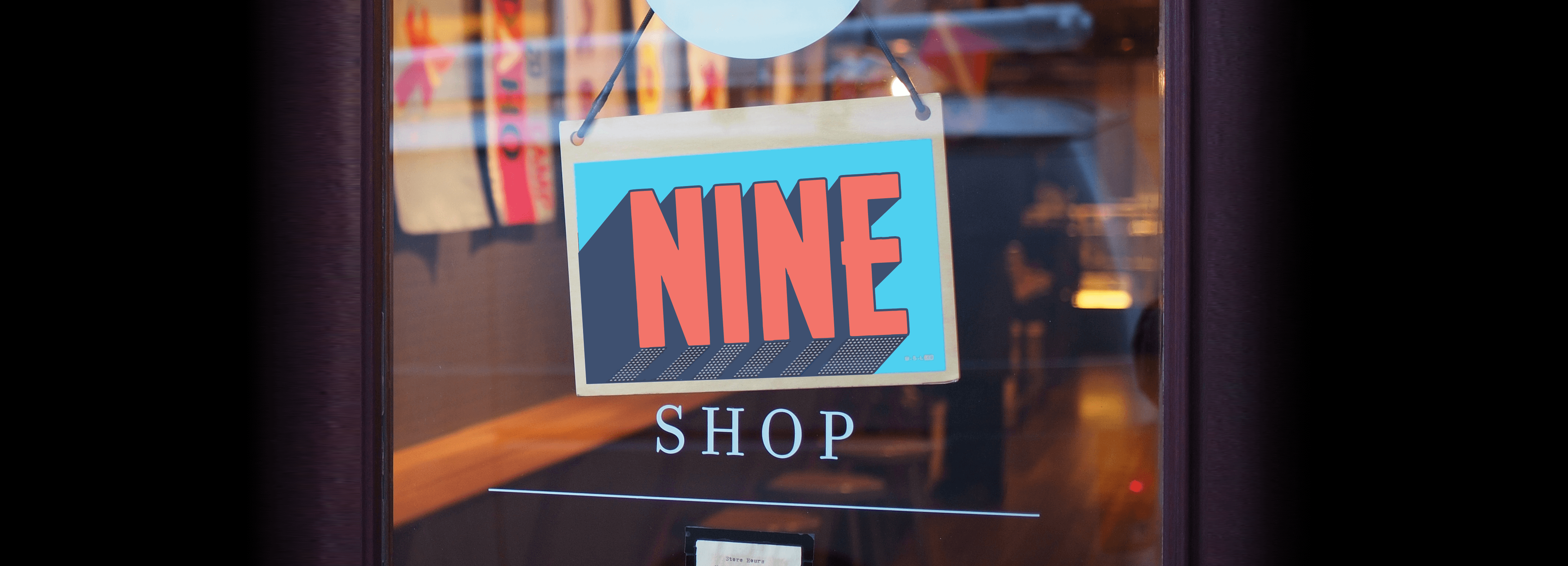Advertising analytics and banner ads – a match made in digital heaven? Without a doubt, yes! After all who doesn’t want to produce better display campaigns? Yet, less than half of brands (45 percent) report feeling up to speed when it comes to reading data.
Advertising via banners, in-app, on smartphones, tablets, or desktop, has never been easier. Brands, using platforms like Bannerflow, can now create, manage, and publish with ease. But there is a catch. Without analytics or quantifiable metrics, you are almost blind. You cannot make informed decisions. You can only make assumptions. In this article, we will explain why analytics are a critical component in the optimisation of display advertising. And why it offers remarkable value!
What is display ad analytics?
Ad analytics is the term used to describe the use and application of metrics. These can include the impressions, clicks, and conversions, online display ads generate. It’s evaluating both a campaign and an individual banner’s effectiveness and performance. Ad analytics uses tools such as Google Analytics, ad servers, panel data and other dedicated ad tech services to offer insight. The goal of display ad analytics is to help tell if a banner has either improved brand perception, or led to a conversion. Zak Hood, head of e-commerce at Ellis Brigham explains the benefits: “Everything you do is quantifiable. Why would anyone want to remain ignorant whether money is being spent wisely?” Combined with useful metrics, analytics offers the scope to do that.
Use ad analytics to track performance
Display ad analytics relies on using good data and industry standard metrics. Do not underestimate the importance of reliable data! Any analytics platform you use must follow industry standard measurements. These are set out by the Interactive Advertising Bureau (IAB). This ensures that all impressions and clicks are counted in the same way. If this wasn’t the case, and everybody used different measurements it would be difficult to work out the impact of a campaign.
A problem with analytics can be that different data providers (DSPs and publishers, etc.) have their own measures. With many layers of the digital advertising landscape for data to travel this can be a big headache as exact figures can differ. So there will always be discrepancies.
For Björn Karlström, Product Manager, at Bannerflow it’s vital to “understand what the metric means and how to apply it. For example, viewability: viewed impressions. These can be measured. But it’s not possible in-app, and harder for mobile.” Before applying analytics it’s important to know the metrics that you need to use for your campaign.
The scope of a banner campaign decides how you use analytics
The use of ad analytics depends on the scope of the banner campaign. The best use of analytics is when looking at a campaign focused on conversions and click throughs. The simplest form is to set performance goals before a campaign begins that once it has ended can be reviewed. Has the banner campaign delivered? Did it achieve what you expected it to – this is where analysis comes in.
But let’s be clear, waiting until the end of a campaign to review is no longer good practice. According to CEO of MarketShare, Wes Nichols, “gone are the days of setting a marketing plan and letting it run its course.” Monitoring a banner campaign performance in real-time is a reality. For example, using products like Bannerflow you can make a call, based on data, to adjust the call to action mid-campaign. Better yet, avoid publishing to domains that aren’t working; even shut down banners that aren’t performing.
A branding campaign is harder to quantify. It’s not based on instant effect and often performed across channels. You do more, and it’s harder to analyse but it can be done. Wes Nichols talking to the Harvard Business Review states how. It involves picking up a spike in click-throughs on a banner ad after a new TV spot goes live. Then linking that effect to changes in purchase patterns. For Nichols, “this would capture the spot’s “assist” to the banner ad and provide a truer picture of the TV ad’s ROI.”
Analytics can help your ads reach an audience
Presenting a chosen audience with a banner ad at the right time, with the right message is key. Ad analytics can help you achieve this as it allows you to review the performance of your campaign. As suggested, if you are failing with an ad on one domain, then try different domains. Use analytics to track how users click on a banner at different times and adjust your campaign. The name of the game is to drive traffic and drive conversions after all.
Analytics can also help you to watch how your banner campaign performs across devices, whether viewed on mobile, tablet or desktop. Create a great user experience. An optimised banner for different platforms will help raise conversion rates.
Optimise your ads and your budget
The use of ad analytics for banners is critical when optimising both design and copy. After all, it’s good to scale things up that work! Using analytics allows you to identify which campaign motifs, designs, or keywords are successful. For Adele Sweetwood, of SAS Institute, this use of analytics allows users to know “within a day, whether things are working. [See] what I can tweak and what I can change…deliver more results.” Using real-time analytics, as well as A/B testing, means variations of banners can be constantly published and terminated.
In the era of zero budget marketing – ad analytics allows you to also optimise your advertising budget. Spending money on analytics means spending less on bad campaigns. Banner campaigns are now informed and adjustable. Keeping a finger on the pulse of customers’ shifting values and attitudes can be achieved at a limited cost. For Bannerflow’s Björn Karlström: “with smart platforms, it’s much cheaper for brands to adapt and change. To make more individual and relevant ads will increase performance.” The upside is your marketing budget isn’t wasted on poor display campaigns.
Next generation banner analytics…
But why stop there? Next generation analytics has the potential to improve banner optimisation even further. The future is measuring a user’s’ interaction with an individual banner. The data exists, it’s a case of having a platform that is capable of telling you the hover and click areas in a banner.
The guys over at the Marketing Technologist produced an interesting trial, which you can read about here. According to Inge van Beekum, a Conversion Optimisation Specialist at Greenhouse Group, the future of banner analytics is bright: “How users interact in a banner becomes easier to see, so we can now focus more deeply on why users interact with some elements or don’t”. By being able to analyse these interactions, informed design and copy choices can be made. For example, where is the best place to put a button? Here at Bannerflow we agree, and that’s why we will be developing similar tools.
Conclusion
There we go then, a brief introduction to ad analytics and why you should be using them to optimise your display campaigns. But a word of advice from Spotify’s senior director of international marketing, Nikki Lambert: “you can’t replace the human touch”. Remember to join up data with creativity! Yes, data is amazing for optimising design and copy but your banner still needs to be remarkable. Analytics tools such as those available on Bannerflow’s display ad platform are one solution.
But where next for analytics and banner ads? More complex data-driven dynamic ads optimised on the go – their performance tracked with every click. This is where new insightful analytics and the use of metrics will make all the difference. There has even been the suggestion that in the future ad tech will help clients design banners. With banner design and the call to action adjusted automatically for specific audiences.
Optimising display advertising for mobile is one of the cornerstones of of increasing advertising performance. Get our 7 ways to increase mobile display advertising performance here.







